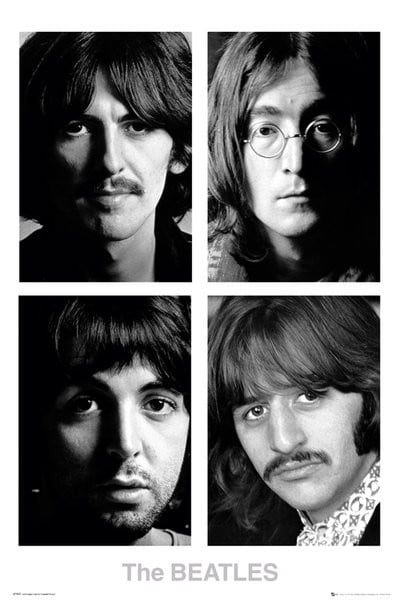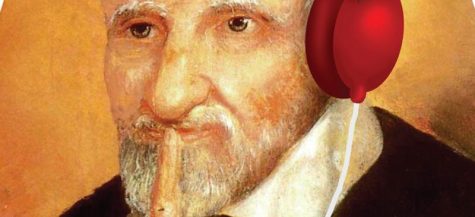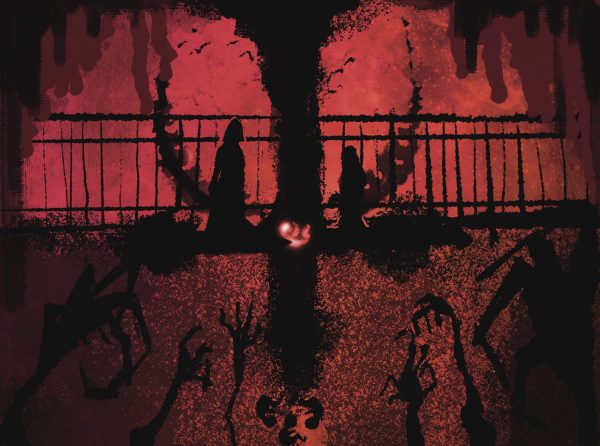The Beatles ‘The White Album’ 50 years later
There are many reasons why 1968 is often considered one of the most historic years in modern history—the Vietnam War, the assassinations of Martin Luther King Jr. and Sen. Robert Kennedy, and the riots at the Democratic National Convention in Chicago to name a few. The U.S., a country that was once an international symbol of hope and prosperity, was engulfed in turmoil both at home and overseas. The sense of unity that defined 1967’s “Summer of Love” was gone.
However, 1968 was not without its silver linings. In a stroke of serendipity, this period of great confusion fostered some of the decade’s most celebrated albums, including Johnny Cash’s “At Folsom Prison,” Jimi Hendrix’s “Electric Ladyland” and Simon & Garfunkel’s “Bookends.” This month, though, perhaps the most enduring album of 1968 turns 50 years old.
On Nov. 22, 1968 the Beatles released their eponymous album—now known simply as “The White Album.” This jarring, avant-garde masterpiece was a product not only of the tensions amongst the band members themselves, but of the international conflicts that had been boiling for years. The album conveyed to the world a vital and timeless message— that even in times of chaos and uncertainty, music is the great uniter.
Following the monumental success of their seminal 1967 album “Sgt. Pepper’s Lonely Hearts Club Band,” the Beatles underwent a great deal of distress. Brian Epstein, the Beatles’ manager with whom they had a close relationship, died from an accidental overdose on Aug. 27, 1967. John Lennon later said of Epstein’s death, “I knew that we were in trouble then. I didn’t really have any misconceptions about our ability to do anything other than play music. I was scared. I thought, ‘We’ve f****g had it.’”
The Beatles tried to manage themselves in the wake of Epstein’s death, but the collaborative momentum that had driven them for years began to dissipate. Tensions within the group rose, and creative disagreements became commonplace. The band also experienced their first critical failure with their self-directed film “Magical Mystery Tour.”
In an attempt to rediscover their artistic cohesion, the Beatles traveled to India for a two-month transcendental meditation retreat from February to April led by Maharishi Mahesh Yogi, whom the group had met three days before Epstein’s death. The band used this time to ground themselves after having spent several years in the limelight.
At the retreat, the Beatles experienced a creative rebirth and collectively wrote a slew of new songs, most of which would end up on The White Album. As per usual, Lennon and Paul McCartney wrote most of the tracks, but George Harrison, who had previously held a junior status in the group, began to develop immensely as a songwriter and contributed four of his own. Even Ringo Starr contributed his first solo composition. However, the Beatles’ songwriting process gradually became less of a group effort. Most of the new songs were written individually and without much input from the other band members.
“There was not a lot of group collaboration among them at this time,” said Cathy Elias, a DePaul professor who teaches an entire class on the history and musicology of the Beatles. “I do not think there was a big inspiration for the album, but rather the opposite—the band members were going their own way with new people in their lives.”
The band soon returned to London and began a five-month recording process from May to October with their longtime producer, George Martin. Despite the sense of peace the Beatles seemed to have achieved while in India, their studio sessions quickly became marred by heated arguments. One of the most notable points of contention was the constant presence of Lennon’s new partner, Yoko Ono, whose attendance in the studio broke the Beatles’ previously established policy barring wives and girlfriends from the studio. Additionally, the couple’s increasing use of heroin resulted in Lennon becoming prone to fits of anger and inactivity.
Lennon and McCartney also became relentlessly critical of each other’s new compositions and often recorded in different studios at the same time. The two of them, along with Harrison, began pursuing individual musical projects outside the band for the first time. Meanwhile, Starr, having grown frustrated with his increasingly peripheral role in the recording process, temporarily quit the band in August. After the three remaining members implored him to reconsider his decision, Starr returned two weeks later.
By the time The White Album was finished, only 16 of the album’s 30 tracks featured all four band members. But, although the Beatles’ music had become noticeably less collaborative, The White Album showed that each member was capable of producing immortal hits on his own.
“Their message was one of universal peace and love.”
— Cathy Ellis, Professor of history, musicology of The Beatles
In direct contrast to the tightly constructed “Sgt. Pepper” album, The White Album is noticeably disjointed. It contains a vast array of musical stylings — ska, blues, folk, country and more — with no thematic through line. The album’s cover art, which is completely white save for a small imprint of the band’s name, was also a dramatic shift from the extravagant, colorful cover art of “Sgt. Pepper.”
“It was a showcase of songs, and to be honest, only critics and George Martin wanted to eliminate songs and make it more cohesive,” said Elias. “There was something on that album for everyone. Beautiful, gentle songs by John (‘Julia’) and Paul (‘I Will’), and gold old raucous party songs to dance to (‘Helter Skelter,’ ‘Birthday,’ ‘Back In The U.S.S.R.’ to name a few). Then there were the favorite sing-along ones like ‘Why Don’t We Do It In The Road?’”
However, The White Album was criticized by some for being too apolitical amid racial conflicts and the Vietnam War.
“In general, the Beatles were not a political band and were not directly involved in U.S. politics the way other groups were,” said Elias. “Their message was one of universal peace and love … On the other hand, ‘Blackbird’ was composed by Paul in India. Many have suggested that the lyrics are about both the call of a bird and references to the civil rights movement in the U.S.”
Aside from criticisms of its fragmentary structure and political indifference, The White Album was lauded as a monumental achievement. Moreover, it features some of the Beatles’ most beloved tunes. “While My Guitar Gently Weeps,” which is regarded by many as the album’s finest track, earned Harrison a great deal of praise that was long overdue; “Helter Skelter” served as the most noteworthy precursor to heavy metal, a genre that became immensely popular in the 1970s thanks to bands like Black Sabbath and Led Zeppelin; and songs like “Blackbird” and “Revolution 1” defined the latter half of the 1960s. Though its tumultuous production seemed to indicate that the Beatles were nearing a breaking point, The White Album remains a postmodern classic and one of the greatest albums of all-time.
In celebration of the album’s 50th anniversary, a deluxe box set will be released Nov. 9. The reissue will include new stereo mixes of all 30 tracks, 27 demo recordings and an assortment of artwork and memorabilia. It is currently available for pre-order on thebeatlesstore.com.






![DePaul sophomore Greta Atilano helps a young Pretty Cool Ice Cream customer pick out an ice cream flavor on Friday, April 19, 2024. Its the perfect job for a college student,” Atilano said. “I started working here my freshman year. I always try to work for small businesses [and] putting back into the community. Of course, interacting with kids is a lot of fun too.](https://depauliaonline.com/wp-content/uploads/2024/04/ONLINE_1-IceCream-600x400.jpg)






